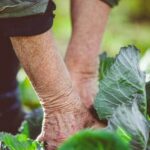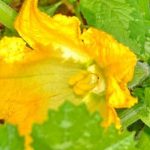Home vegetable gardening in Washington offers a unique and rewarding experience for individuals looking to grow their own produce. With the region’s diverse climate and soil conditions, Washington presents both challenges and opportunities for gardeners.
In this article, we will explore the ins and outs of home vegetable gardening in Washington, providing valuable insights on choosing the right vegetables, soil preparation, planting techniques, pest control, maximizing space, extending the growing season, harvesting and preservation, as well as connecting with the local gardening community.
When it comes to successful home vegetable gardening in Washington, choosing the right vegetables is crucial. The state’s varying climate regions require careful consideration of which vegetables are best suited for the specific conditions. From cool-season crops that thrive in the western parts of Washington to heat-tolerant varieties for the eastern regions, knowing what to plant can make all the difference.
In addition to selecting suitable vegetables, preparing the soil is another essential aspect of successful gardening in Washington. Soil composition varies across the state, so understanding how to amend and maintain your soil based on its specific needs is vital for healthy plant growth. Proper soil preparation sets the stage for a bountiful harvest and ensures a thriving garden throughout the season.
Choosing the Right Vegetables for Washington’s Climate
When it comes to home vegetable gardening in Washington, choosing the right vegetables for the climate is essential for a successful harvest. Washington’s diverse climate, which includes both wet and dry regions, as well as varying elevation levels, means that not all vegetables will thrive in every part of the state. Here are some vegetables that are well-suited for Washington’s climate:
- Tomatoes: Varieties such as “Oregon Spring” and “Sub-Arctic Plenty” are great choices for Washington’s short growing season and cooler temperatures.
- Kale: This hardy green thrives in Washington’s mild and moist climate, making it a popular choice for home gardeners.
- Carrots: Varieties like “Sugarsnax” and “Nantes” perform well in the well-drained soils of Washington, producing sweet and crisp carrots.
In addition to these vegetables, other suitable options for home vegetable gardening in Washington include potatoes, zucchini, and lettuce. It’s important to consider factors such as frost tolerance, days to maturity, and heat resistance when selecting the right vegetables for your Washington garden.
By choosing vegetables that are well-adapted to Washington’s climate, home gardeners can increase their chances of a bountiful harvest while reducing the need for excessive watering or soil amendments. Whether you’re gardening in the rainy western part of the state or the drier eastern region, selecting the right vegetables is an important first step towards a successful home vegetable garden.
Preparing the Soil for Successful Gardening
When it comes to home vegetable gardening in Washington, one of the most important factors for success is preparing the soil. Washington’s diverse climate and soil types require careful attention to ensure that your vegetables have the best possible growing conditions. Here are some tips for preparing the soil for successful gardening in Washington:
- Test the Soil: Before you start planting, it’s a good idea to test your soil to determine its pH level and nutrient content. You can purchase a DIY soil testing kit or send a sample to a professional lab for analysis.
- Amend as Needed: Once you know the condition of your soil, you can add necessary amendments to improve its quality. Common amendments include compost, aged manure, peat moss, and perlite.
- Consider Raised Beds: In areas with heavy rainfall or poorly draining soil, raised beds can prevent waterlogging and create better growing conditions for your vegetables.
Preparation is key when it comes to successful home vegetable gardening in Washington. By taking the time to test and amend your soil, you can give your plants the best possible start and increase your chances of a bountiful harvest.
Best Practices for Planting and Watering in Washington
Choosing the Right Planting Time
In Washington, the climate can vary greatly depending on the region. It’s important to research and understand your specific microclimate before planting your vegetables. The best time for planting in most areas of Washington is from late March to early May. However, certain vegetables like tomatoes and peppers may need to wait until late May or even early June since they prefer warmer temperatures.
Proper Watering Techniques
Washington’s climate can be quite diverse, with some areas receiving more rainfall than others. Regardless of your location, it’s essential to water your vegetable garden regularly, especially during the dry summer months. A good rule of thumb is to water deeply but infrequently to encourage deep root growth. Consider using a drip irrigation system or soaker hoses to ensure that your plants receive consistent moisture without wasting water through evaporation.
Protecting Your Plants From Overwatering
While it’s crucial to provide enough water for your vegetable garden, it’s equally important not to overwater your plants. Overwatering can lead to root rot and other moisture-related issues. To prevent overwatering, consider using mulch around your plants to help retain soil moisture and reduce evaporation. Additionally, be mindful of the weather conditions and adjust your watering schedule accordingly.
By following these best practices for planting and watering in Washington, you can set yourself up for a successful home vegetable gardening experience in the state.
Dealing With Pests and Diseases in Washington’s Vegetable Gardens
When it comes to home vegetable gardening in Washington, dealing with pests and diseases is an inevitable part of the process. The climate in Washington can create favorable conditions for certain pests and diseases, so it’s important for gardeners to be proactive in preventing and managing these issues.
One of the best practices for preventing pest infestations and disease outbreaks is to choose plant varieties that are resistant to common issues in Washington. For example, powdery mildew can be a problem for many vegetable plants in the state, so selecting mildew-resistant varieties can help mitigate this issue. Additionally, practicing crop rotation can help prevent the buildup of soil-borne diseases.
In some cases, despite best efforts, pests and diseases may still affect a home vegetable garden. When this happens, it’s important for gardeners to properly identify the issue before taking action. There are many organic methods for controlling pests and diseases, such as using insecticidal soaps for aphids or introducing beneficial insects like ladybugs to control pest populations. For diseases, proper sanitation practices such as removing infected plant material can help prevent the spread of pathogens throughout the garden.
| Common Pest/Disease | Preventative Measures |
|---|---|
| Powdery Mildew | Choose mildew-resistant plant varieties |
| Aphids | Use insecticidal soaps or introduce beneficial insects like ladybugs |
| Fungal Diseases | Practice proper sanitation by removing infected plant material |
By being proactive and knowledgeable about common pests and diseases in Washington’s vegetable gardens, home gardeners can take steps to prevent issues before they arise and effectively manage them when necessary. Connecting with local gardening communities can also provide valuable insights and support when dealing with these challenges. Overall, with proper care and attention, it is possible to have a thriving home vegetable garden in Washington despite the presence of pests and diseases.
Maximizing Space in Small Washington Gardens
Vertical Gardening
One of the best ways to maximize space in a small Washington garden is through vertical gardening. By growing your vegetables upwards instead of outwards, you can make the most of limited space. Consider installing trellises, using hanging baskets, or creating a tiered system for your plants. This not only helps with space constraints but also allows for better air circulation and sunlight exposure for your plants.
Container Gardening
For those with small outdoor spaces or no garden beds at all, container gardening is the perfect solution. Using containers like pots, planters, or even repurposed items such as buckets or crates, you can grow a variety of vegetables on your patio, balcony, or even indoors. Container gardening also makes it easier to control soil quality and drainage, which is crucial for successful vegetable growth.
Intercropping and Companion Planting
In small gardens, it’s essential to make the most of every inch of space available. Intercropping involves growing different types of plants close together so that they can benefit from each other’s presence. For example, planting fast-growing lettuce between slower-growing tomatoes can maximize yield and use less space overall.
Companion planting involves placing complementary plants near each other for pest control or nutrient sharing. Learning about these techniques can help you efficiently use the limited space in your Washington home vegetable garden.
By implementing these strategies and being creative with your gardening approach, even those with small spaces in Washington can enjoy a bountiful harvest of home-grown produce. With careful planning and thoughtful use of available space, anyone can turn their limited area into a flourishing vegetable garden full of fresh and healthy crops.
Tips for Extending the Growing Season in Washington
For home vegetable gardening in Washington, the growing season can be quite short due to the region’s cooler temperatures and frequent rainfall. However, there are several strategies that can be employed to extend the growing season and maximize the harvest from your garden. By implementing these tips, Washington gardeners can enjoy a longer period of fresh, home-grown produce.
One popular method for extending the growing season is to utilize cold frames or hoop houses. These structures provide protection from chilly temperatures and harsh weather conditions, allowing plants to continue thriving even as the seasons change. Cold frames are particularly effective for starting seeds early in the spring or for overwintering more delicate plants. They can be easily constructed using basic materials and are a cost-effective way to prolong the growing season.
Additionally, utilizing row covers or floating row covers can help protect plants from cool temperatures and pests, while still allowing sunlight and moisture to reach the crops. These covers act as a barrier against frost and also serve as a form of pest control, creating a microclimate that is conducive to plant growth. Row covers are especially useful for early spring planting and can add several weeks to the growing season by providing essential protection.
Finally, consider planting cold-hardy varieties of vegetables that are well-suited for Washington’s climate. These varieties have been specifically bred to withstand cooler temperatures and have a better chance of thriving in the state’s conditions. By choosing appropriate plant species, home vegetable gardeners in Washington can ensure a successful harvest even as the seasons change. Overall, by implementing these tips and techniques, it is possible to effectively extend the growing season for home vegetable gardening in Washington.
Harvesting and Preserving Your Home-Grown Produce in Washington
After all the hard work of planting, watering, and tending to your home vegetable garden in Washington, it’s time to reap the fruits of your labor. Harvesting your produce at the right time is crucial to getting the best flavor and nutrition from your vegetables. It’s important to check for the optimal ripeness of each type of vegetable you’re growing, as this can vary depending on the variety and environmental conditions.
Once you’ve harvested your vegetables, it’s essential to know how to properly store or preserve them to maintain their freshness and flavor. In Washington, where temperatures can vary greatly throughout the year, finding the right storage methods for each type of vegetable is key. Some vegetables do well stored in a cool, dark place like a root cellar or refrigerator, while others may require blanching and freezing or canning to preserve them for longer periods.
Preserving your harvest through canning, pickling, fermenting, or drying is a great way to enjoy your home-grown produce throughout the year. With a little know-how and some basic equipment, you can stock your pantry with delicious canned tomatoes, pickled cucumbers, fermented sauerkraut, or dried herbs from your own garden.
| Vegetable | Optimal Ripeness |
|---|---|
| Tomatoes | Firm with a slight give when pressed |
| Cucumbers | Bright green color and firm texture |
| Carrots |
Connecting With the Local Home Vegetable Gardening Community in Washington
Are you interested in home vegetable gardening in Washington? Connecting with the local gardening community can provide valuable resources, support, and inspiration for your own gardening journey. Whether you are a beginner or an experienced gardener, getting involved in the local gardening community can enhance your gardening experience.
One way to connect with fellow home vegetable gardeners in Washington is to join a community garden. These shared spaces allow individuals to have their own plot where they can grow their favorite vegetables while also interacting with other gardeners. Community gardens often organize workshops, events, and educational programs that can help you expand your knowledge and skills in home vegetable gardening.
Another option for connecting with the local gardening community is to attend farmers’ markets or local garden club meetings. Farmers’ markets are not only great places to purchase fresh produce, but they also offer opportunities to meet and network with local growers and gardening enthusiasts. Local garden clubs often hold regular meetings where members can exchange tips, share experiences, and learn from each other’s successes and challenges in home vegetable gardening in Washington.
You can also consider participating in online forums or social media groups dedicated to home vegetable gardening in Washington. These platforms provide a convenient way to connect with others who share your passion for growing your own food. By joining these communities, you can seek advice, ask questions, and engage in discussions about all aspects of home vegetable gardening specific to the Washington climate and environment.
Resources for Home Vegetable Gardening in Washington
In conclusion, home vegetable gardening in Washington can be a rewarding and fulfilling endeavor for those who are willing to put in the time and effort. By choosing the right vegetables for Washington’s climate and preparing the soil properly, gardeners can set themselves up for a successful growing season. However, it’s important to stay informed about best practices for planting, watering, and dealing with pests and diseases in order to ensure a bountiful harvest.
One of the keys to successful home vegetable gardening in Washington is maximizing space in small gardens. With limited room, it’s important to make the most of every available square inch. Additionally, by learning how to extend the growing season through techniques such as using row covers or cold frames, gardeners can enjoy fresh produce for an even longer period of time.
For those who are new to home vegetable gardening in Washington, connecting with the local gardening community can provide valuable support and resources. Whether it’s joining a community garden or attending gardening workshops and events, interacting with experienced gardeners can offer insights and advice that may not be readily available elsewhere.
Overall, by taking advantage of all the resources available for home vegetable gardening in Washington, individuals can cultivate a thriving garden and enjoy the fruits of their labor throughout the growing season.
Frequently Asked Questions
When Should I Start a Vegetable Garden in Washington State?
In Washington State, it is best to start a vegetable garden in late winter or early spring, once the soil can be worked and the danger of frost has passed. This usually means late March to early April for most areas.
What Grows Well in a Garden in Washington State?
Washington State’s climate and soil are conducive to growing a variety of vegetables. Some vegetables that grow well in this region include tomatoes, potatoes, carrots, lettuce, kale, peas, beans, and broccoli. These plants thrive in the cool temperatures and moist conditions of the Pacific Northwest.
What Vegetables Are Easy to Grow in the Pacific Northwest?
Several vegetables are easy to grow in the Pacific Northwest due to its moderate climate. These include leafy greens like lettuce, spinach, and kale, root vegetables such as carrots and beets, as well as peas, beans, and radishes. These vegetables generally don’t require extensive care or maintenance and can tolerate the region’s typical weather patterns.

If you’re looking to get into vegetable gardening, or are just looking for some tips on how to make your current garden better, then you’ve come to the right place! My name is Ethel and I have been gardening for years. In this blog, I’m going to share with you some of my best tips on how to create a successful vegetable garden.





